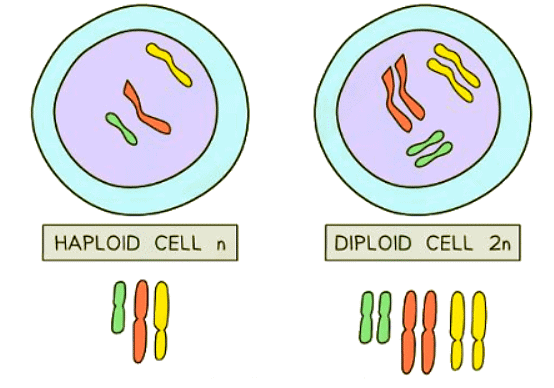Class 10 Exam > Class 10 Notes > Biology for GCSE/IGCSE > Sexual Reproduction
Sexual Reproduction | Biology for GCSE/IGCSE - Class 10 PDF Download
Gametes & Zygotes
Sexual Reproduction
- Sexual reproduction involves the merging of two sex cells' nuclei to create a fertilized egg cell known as a zygote, leading to the birth of genetically distinct offspring.
- This process results in the combination of genetic material from two distinct parents, ensuring diversity in the offspring.
- Fertilization describes the union of gamete nuclei, where each gamete originates from different parents, contributing to genetic variation in the offspring.
- The fusion of gamete nuclei during fertilization is crucial for the genetic diversity seen in offspring.
Gametes
- Gametes: Gametes are specialized sex cells, such as sperm and ovum in animals and pollen nucleus and ovum in plants.
- Chromosome Difference: Unlike normal body cells, gametes have half the number of chromosomes, termed as a haploid nucleus. Normal human body cells have 46 chromosomes, while each gamete contains 23 chromosomes.
- Zygote Formation: When male and female gametes fuse during fertilization, they form a zygote, which is a fertilized egg cell. The zygote comprises the complete set of 46 chromosomes, with half inherited from each parent, resulting in a diploid nucleus.
Haploid & Diploid Cells
- Gamete Nuclei: Haploid cells have half the chromosomes of normal body cells. In humans, this equals 23 chromosomes.
- Zygote Nuclei: Diploid cells have the same chromosome count as normal body cells, which is 23 pairs in humans. The zygote maintains its diploid state as it develops into a fetus and embryo during pregnancy.
Advantages & Disadvantages of Sexual Reproduction

- When crop plants reproduce sexually, variation is increased. This can lead to the production of genetic variants that are better adapted to cope with changes in weather conditions or that yield significantly higher harvests. Example: A crop plant may produce offspring that are more resistant to drought due to increased genetic variation.
- However, this increased variation can also result in offspring that are less successful than the parent plant in terms of growth or harvest quality. Example: The genetic variability may lead to some plants being less productive in terms of crop yield compared to the parent plant.
Question for Sexual ReproductionTry yourself: What is the main purpose of sexual reproduction?View Solution
The document Sexual Reproduction | Biology for GCSE/IGCSE - Class 10 is a part of the Class 10 Course Biology for GCSE/IGCSE.
All you need of Class 10 at this link: Class 10
|
101 videos|193 docs|33 tests
|
FAQs on Sexual Reproduction - Biology for GCSE/IGCSE - Class 10
| 1. What is the difference between gametes and zygotes? |  |
Ans. Gametes are haploid cells that combine during fertilization to form a diploid zygote. Gametes are sex cells (sperm and egg), while a zygote is the result of the fusion of these gametes.
| 2. How do haploid and diploid cells differ in sexual reproduction? |  |
Ans. Haploid cells have half the number of chromosomes as diploid cells. In sexual reproduction, haploid gametes from two individuals combine to form a diploid zygote, which then develops into an organism with a complete set of chromosomes.
| 3. What are the advantages of sexual reproduction? |  |
Ans. Sexual reproduction allows for genetic diversity, which can lead to increased adaptability and survival of a species. It also helps in the elimination of harmful mutations through genetic recombination.
| 4. What are the disadvantages of sexual reproduction? |  |
Ans. Sexual reproduction requires the investment of time and energy to find a mate, and there is a risk of producing offspring with undesirable traits. It also limits the rate of reproduction compared to asexual reproduction.
| 5. How do gametes and zygotes play a crucial role in sexual reproduction? |  |
Ans. Gametes are essential for sexual reproduction as they carry genetic information from each parent. When gametes fuse to form a zygote, genetic diversity is increased, leading to the creation of offspring with unique characteristics.
Related Searches
















